Attachment 3 - Design Document
Attachment 3_Design Document.doc
Racial and Ethnic Approaches to Community Health across the US Management Information System
Attachment 3 - Design Document
OMB: 0920-0778
Attachment 3. b
ATTACHMENT 3
DESIGN DOCUMENT
Form: Approved
OMB No.: 0920-XXXX
Exp. Date: xx/xx/xxxx
REACH US Management Information System
Design Document
Public reporting burden of this collection of information is estimated to average 90 minutes per response, including the time for reviewing instructions, searching existing data sources, gathering and maintaining the data needed, and completing and reviewing the collection of information. An agency may not conduct or sponsor, and a person is not required to respond to a collection of information unless it displays a currently valid OMB control number. Send comments regarding this burden estimate or any other aspect of this collection of information, including suggestions for reducing this burden to CDC/ATSDR Reports Clearance Officer; 1600 Clifton Road NE, MS D-74, Atlanta, GA 30333; ATTN: PRA (0920-XXXX)
Table of Contents
1. Goals……………………………………………………………………………
2. User Experience………………………………………………………………..
2.1 Audience and Users……………………………………………………………
2.2 Functional Requirements……………………………………………………...
3. Site Content…………………………………………………………………….
3.1 General Information: Contact Information………………………………...
3.2 General Information: Project Information…………………………………
3.3 General Information: Project Information Attachments………………….
3.4 General Information: Priorities, Communities, and Burden…………….
3.5 General Information: Legacy Projects…………………………………….
3.6 Resources: Staff……………………………………………………………..
3.7 Resources: Staff Attachments……………………………………………...
3.8 Resources; Partners and Contractors…………………………………..…
3.9 Resources: Partners and Contractors Attachments……………………...
3.10 Resources: Coalitions…………………………………………………….…
3.11 Resources: Coalitions Attachments………………………………………..
3.12 Resources: Standard Data Sources Sources……………………………...
3.13 Resources: Project Specific Data Sources…………………………….…..
3.14 Resources: Plans and Logic Models………………………………….……
3.15 Community Action Plan: Project Goals……………………………….…..
3.16 Community Action Plan: Outcome Objectives……………………….…..
3.17 Community Action Plan: Annual Objectives……………………………..
3.18 Community Action Plan: Major Activities……………………………......
3.19 Community Action Plan: Objective Progress and Results……………….
3.20 Community Action Plan: Activity Progress……………………………….
3.21 Community Action Plan: Products………………………………………...
3.22 Community Action Plan: Product Attachments………………………….
3.22 Community Action Plan: Evaluation Plan…………………………….…..
The Centers for Disease Control and Prevention began working with Northrop Grumman to customize an internet-based application to facilitate their efforts with Racial and Ethnic Approaches to Community Health across the U.S. (REACH US) grantees (the users). This design document guides the development of the customized REACH Management Information System (REACH MIS).
This design document begins by articulating the goals of the web-based application, discussing the anticipated user experience, and outlining the site contents.
The purpose of the REACH MIS is to provide an Internet-based data warehousing application that will enable REACH US grantees to document and organize their activities related to their organization and community efforts.
The primary goals of REACH MIS include the following:
Provide data entry, storage, management, retrieval, and reporting and interactive graphing functions of qualitative and quantitative data.
Document and systematize activities related to organizational and community efforts.
Capture qualitative and quantitative information and data about a coalition's actions and interventions, targeted indicators of change, and indicator data tracking.
Track indictor data related to change among influential individuals or groups.
Monitor public health indicator outcomes related to each coalition’s identified health priority area.
Facilitate internal and cross-coalition learning, including information sharing.
Produce reports about grantee activities following CDC prescribed formats.
Allow grantee to produce reports following custom formats for their own purposes.
2. User Experience
2.1 Audience and Users
Three primary audience segments will use and benefit from the REACH MIS.
CDC Project Officer and Program Consultants. The interests of this audience segment include monitoring the grant-related activities of the users; evaluating the extent of system use; evaluating the efficacy of providing a web-based data warehousing tool for effective capacity building, targeted actions, and community and systems changes and change among change agents; widespread change in risk/protective behavior; and analyzing aggregate data to assess and monitor grantee activity effectiveness for reducing health disparities.
Grantee Coalitions. This broad audience segment contains several likely types of end users, including project directors, evaluators, principal investigators, project staff, and interested members of the grantee communities. Each of the first three types of users in this segment can be further differentiated as those who are likely to frequently use the system for data entry, activity monitoring, and/or reporting versus those who are most likely interested in occasional browsing through the system.
Others. There are potentially other audience segments, including other federal and State grant making administrators and officials who may look to CDC for insight regarding the use of web-based tools for grantee monitoring, reporting, training, and technical assistance. There may be other community members who are interested in CDC activities or whose interest stems from concern regarding health disparities. Users from these segments typically will require an experience similar to interested community members. That is, read-only access to the system will be necessary for certain public areas and editing access will not be available usually.
The site provides the following functional requirements:
Allow users to enter and retrieve narrative (i.e., qualitative) data related to activity processes.
Allow users to enter and retrieve statistical (i.e., quantitative) data related to activity process.
Allow users to interrelate qualitative and quantitative data related to a single activity.
Allow users to relate qualitative and quantitative data across multiple activities.
Display data in textual, tabular, and graphic formats.
Incorporate quality control checks and validation processes at the time of data entry.
Incorporate quality control checks and validation processes for contractor and client review and follow-up.
Various levels of security allowing users control of which users to provide read-only, read and write, or no access (public or private).
File upload and storage capability for word processing, graphic, and spreadsheet files, but excluding executable program files, to a file library shared within grantee organization.
Ability to attach previously uploaded files from the grantee library to various places within the system.
3.1 General Information: Contact Information
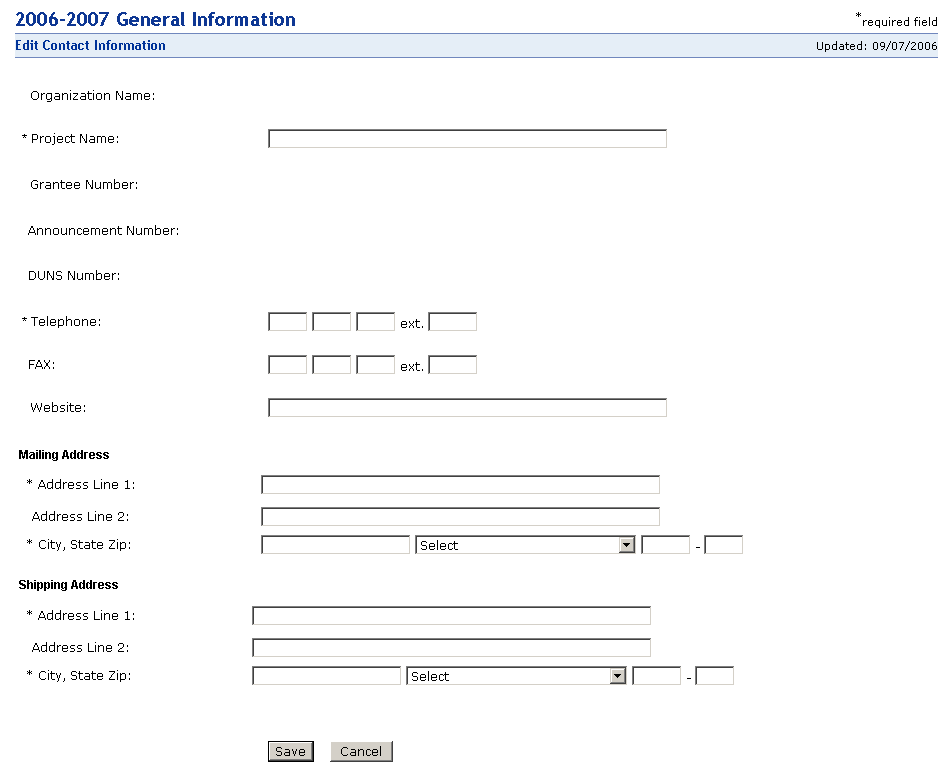
3.2 General Information: Project Information
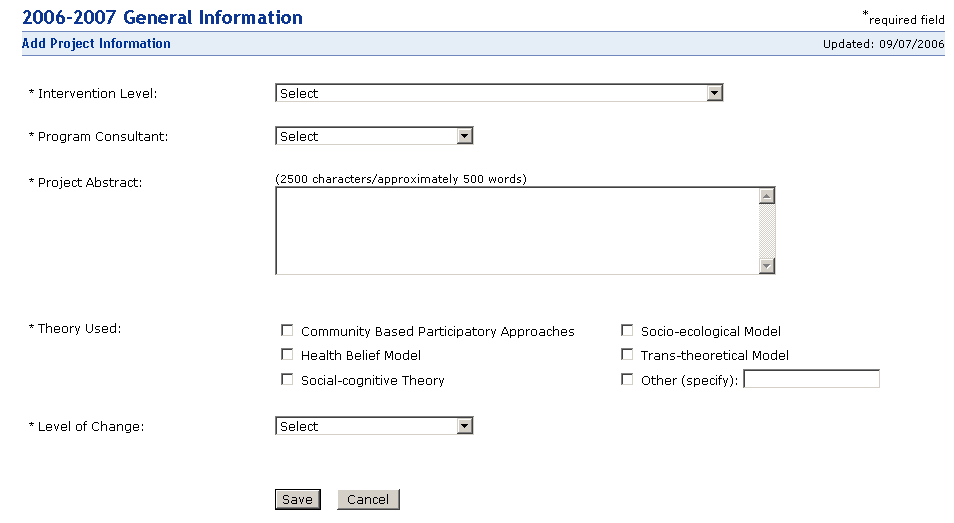
3.3 General Information: Project Information Attachments
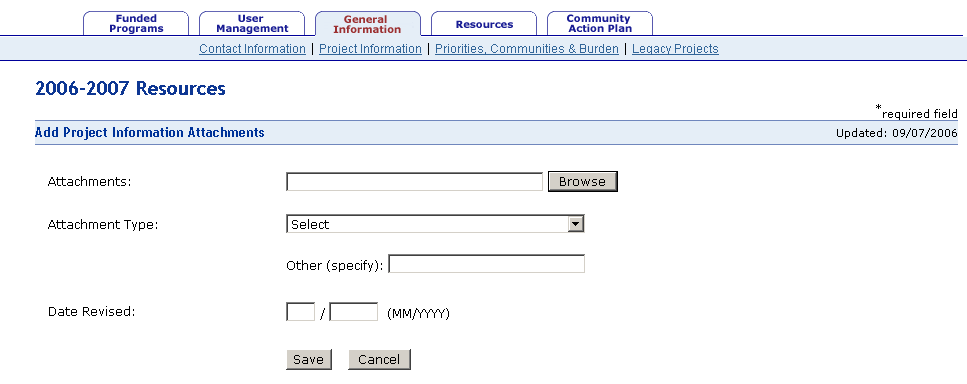
3.4 General Information: Priorities, Communities and Burden
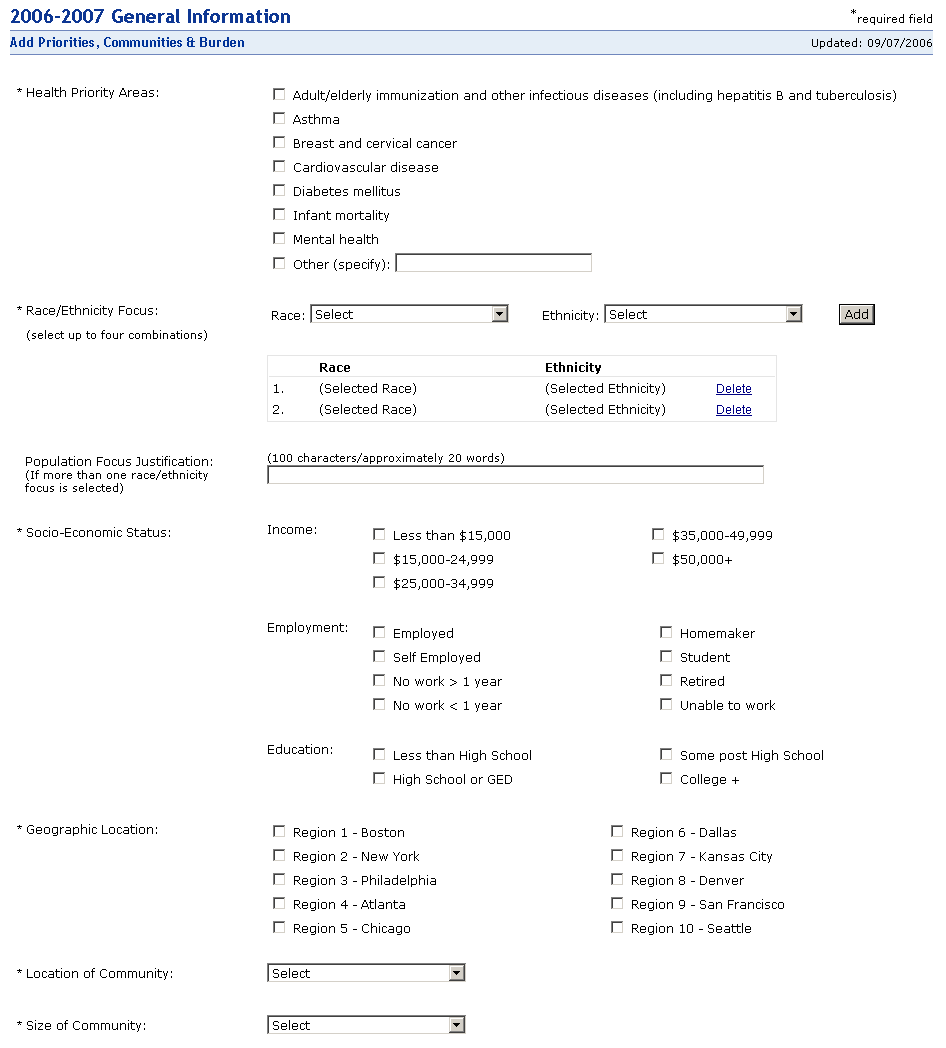
General Information: Priorities, Communities and Burden (Continued)
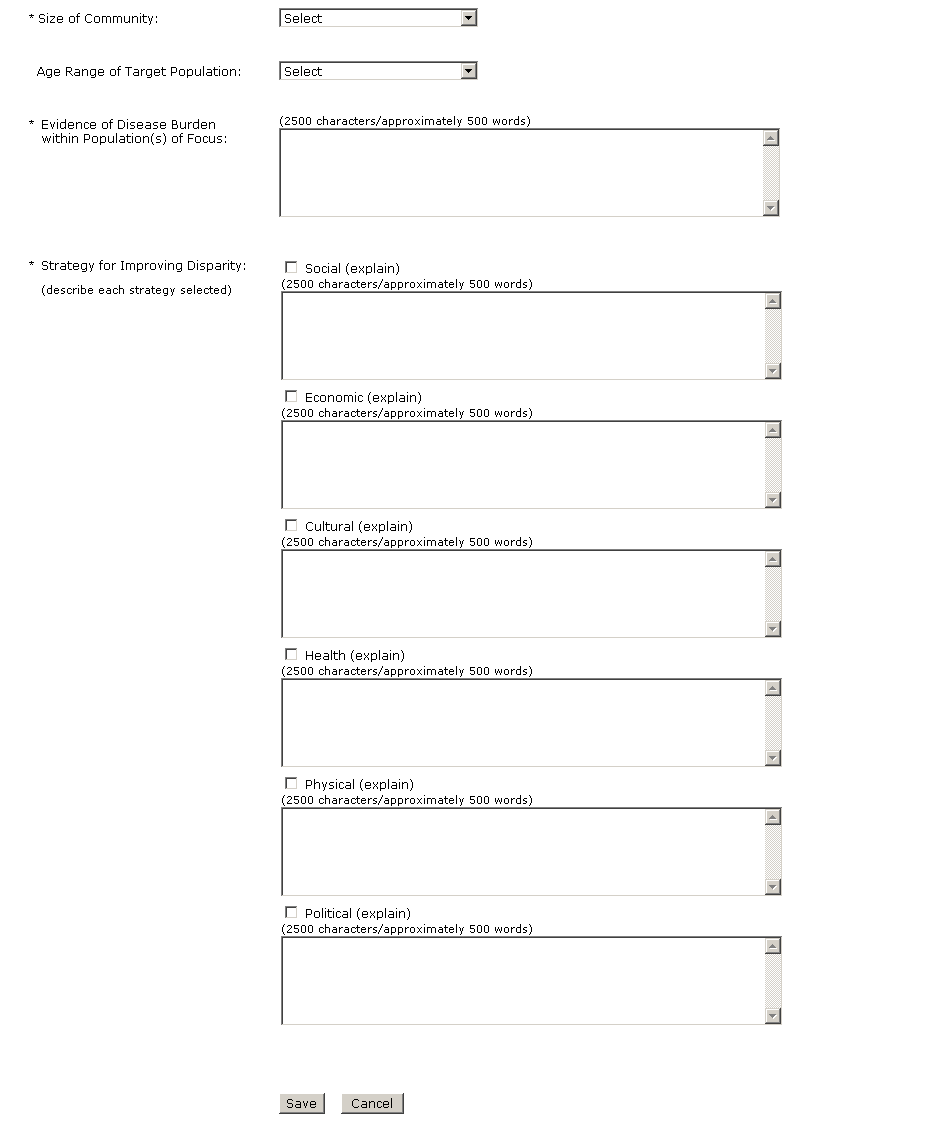
3.5 General Information: Legacy Projects
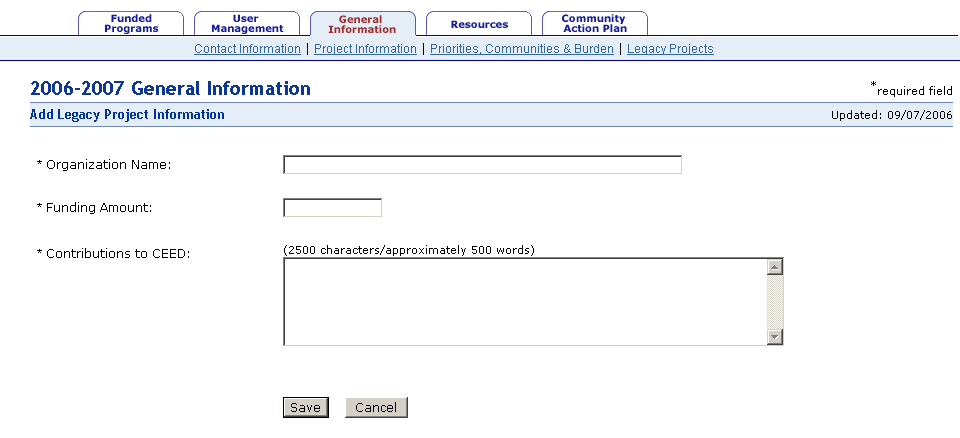
3.6 Resources: Staff
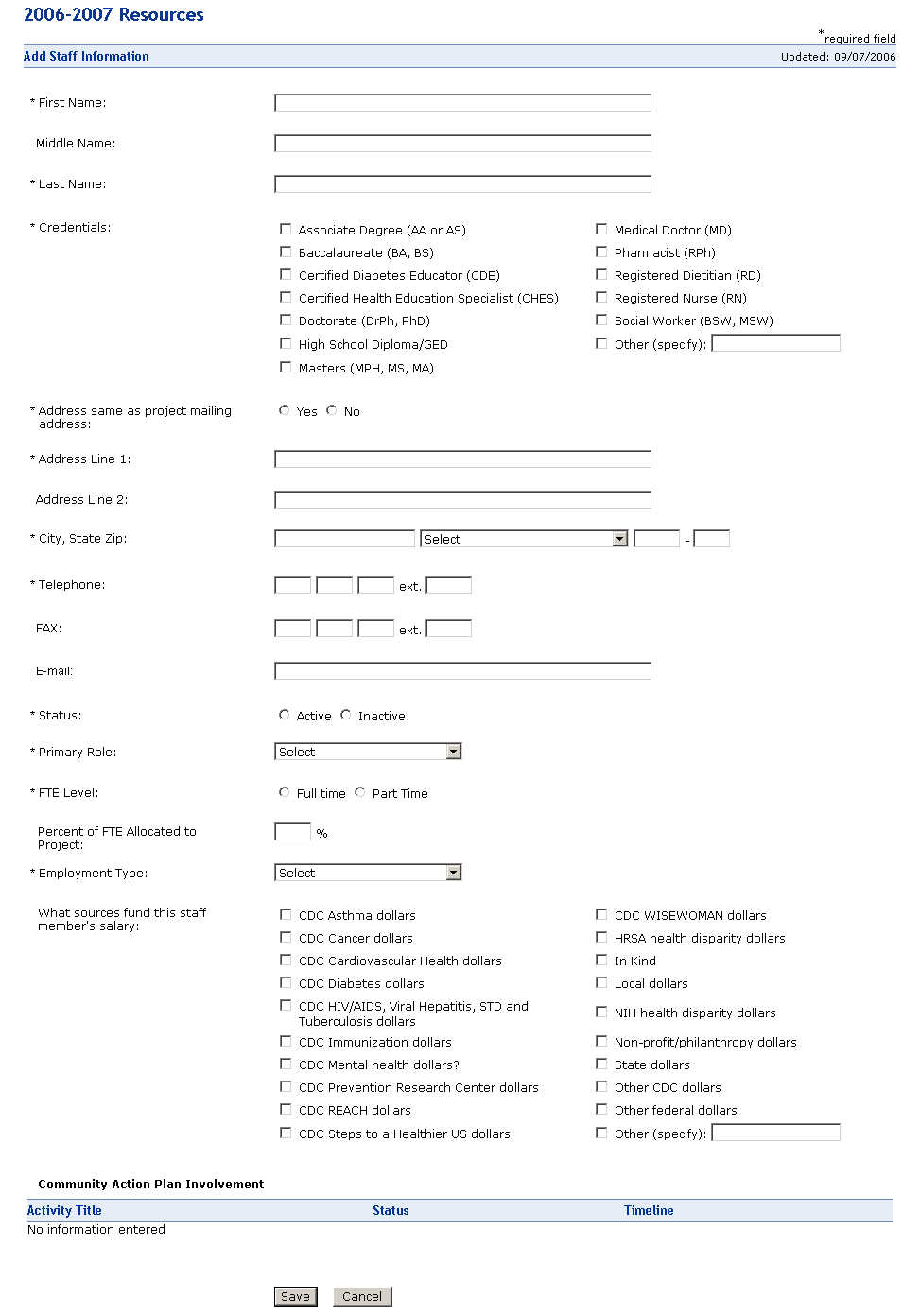
3.7 Resources: Staff Attachments
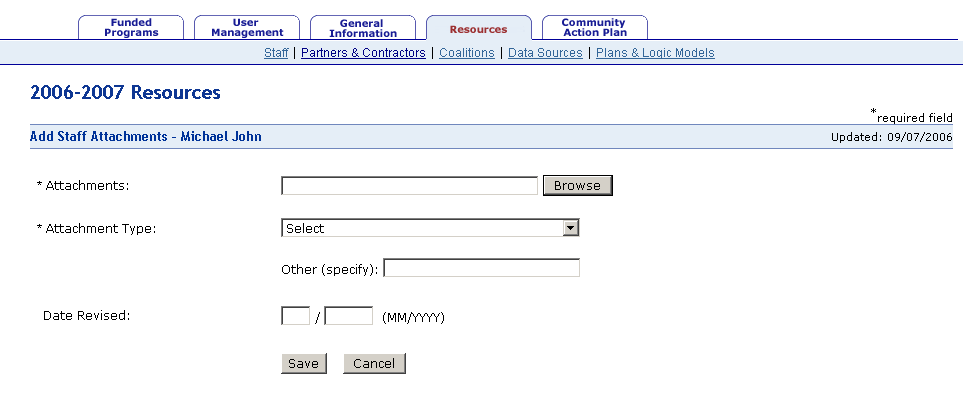
3.8 Resources: Partners and Contractors

Resources: Partners and Contractors (Continued)
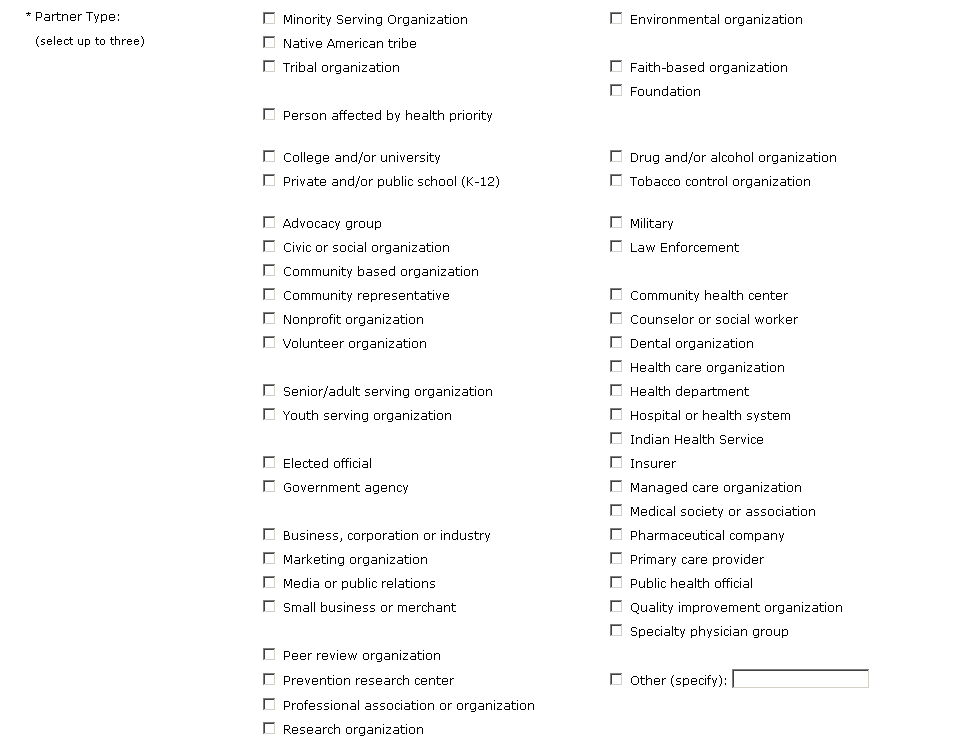
Resources: Partners and Contractors (Continued)
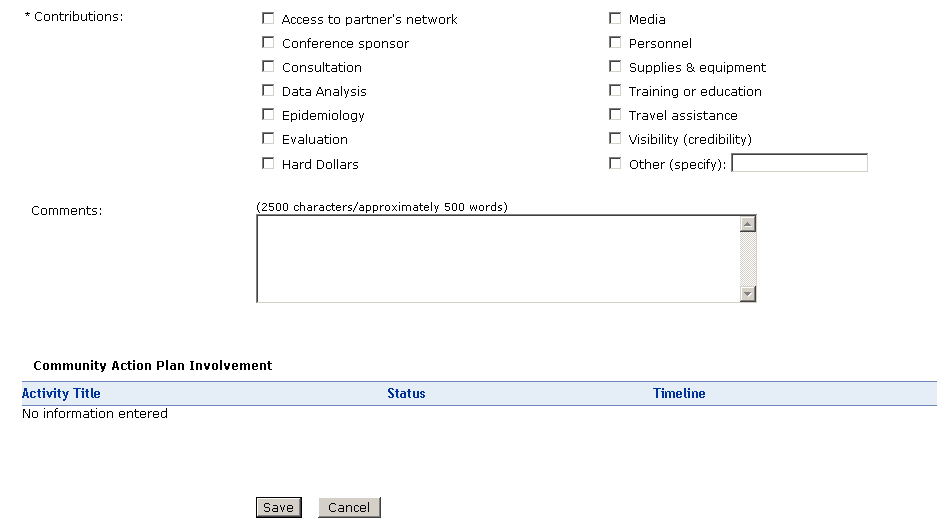
3.9 Resources: Partners and Contractors Attachments
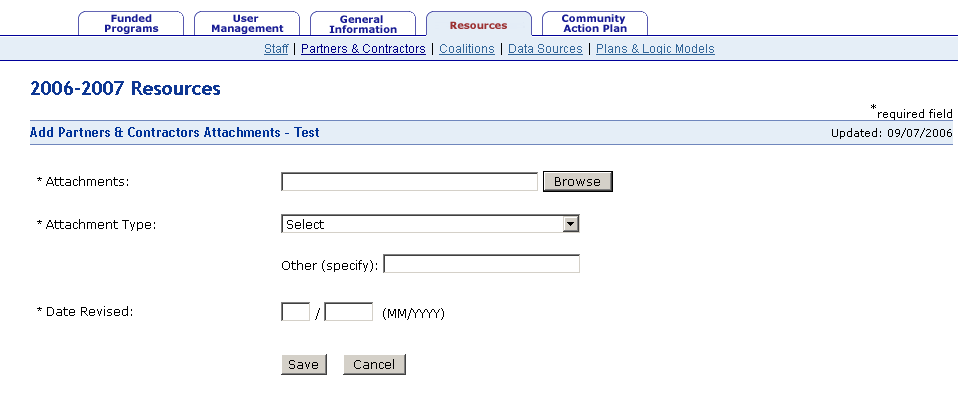
3.10 Resources: Coalitions
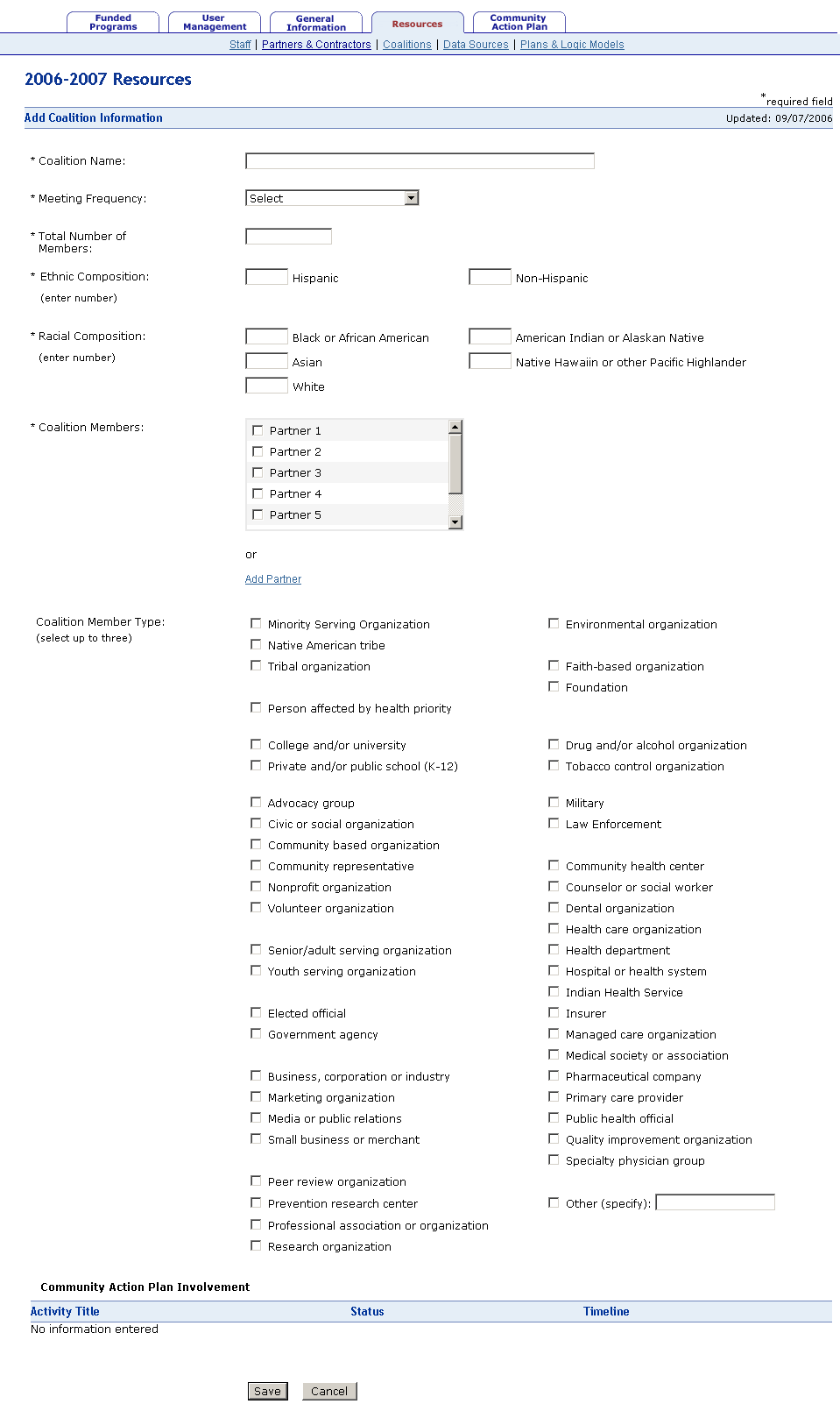
3.11 Resources: Coalition Attachments
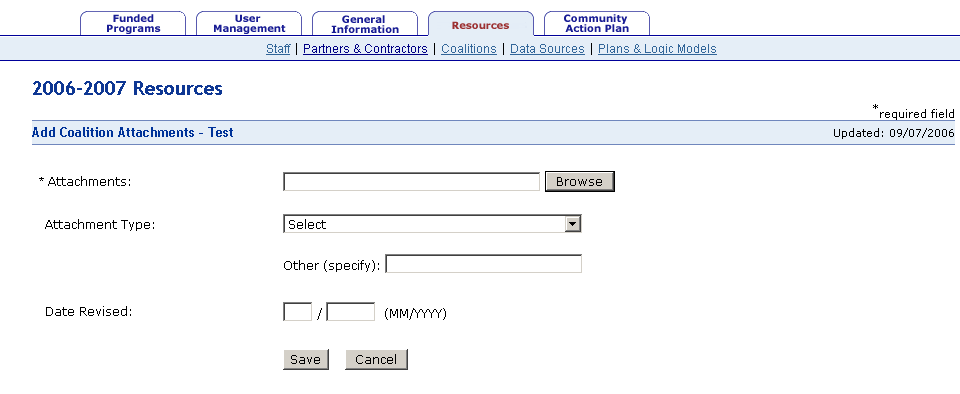
3.12 Resources: Standard Data Sources
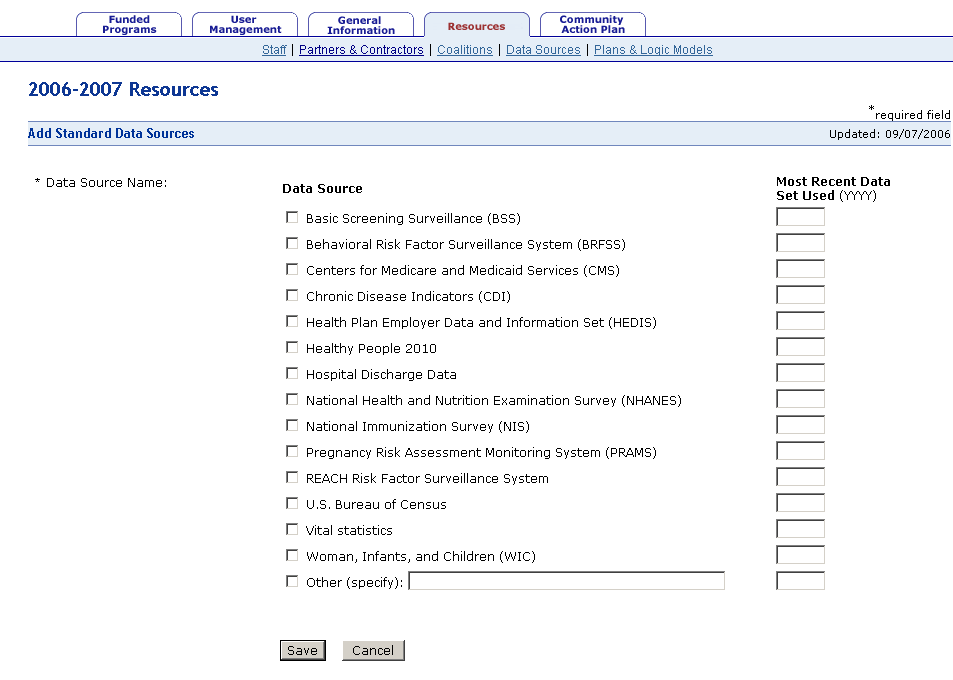
3.13 Resources: Project Specific Data Sources
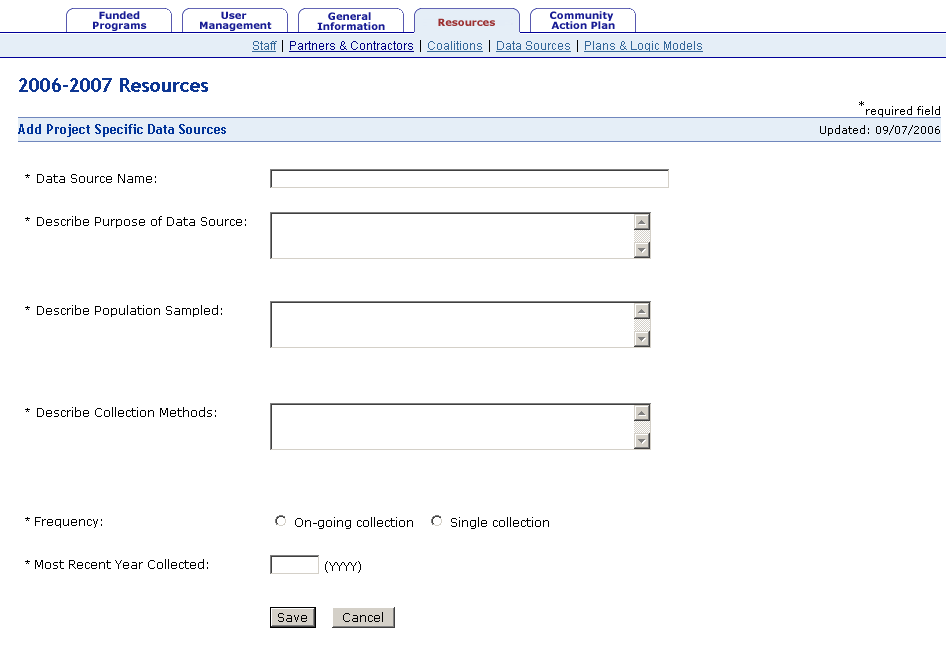
3.14 Resources: Plans and Logic Models
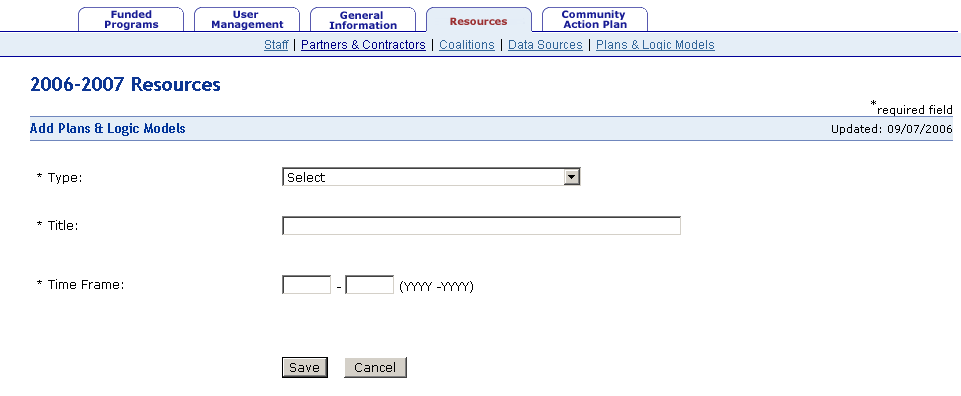
3.15 Community Action Plan: Project Goals
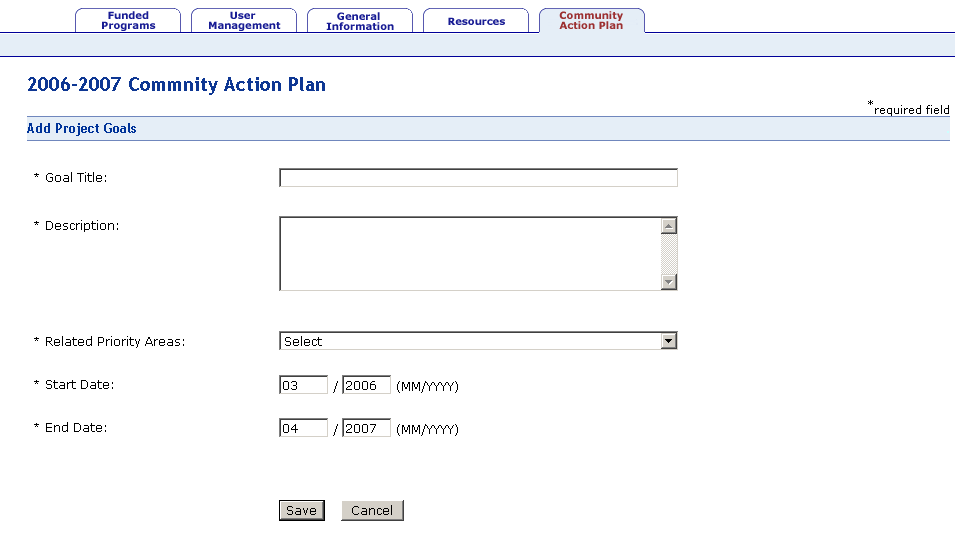
3.16 Community Action Plan: Outcome Objectives
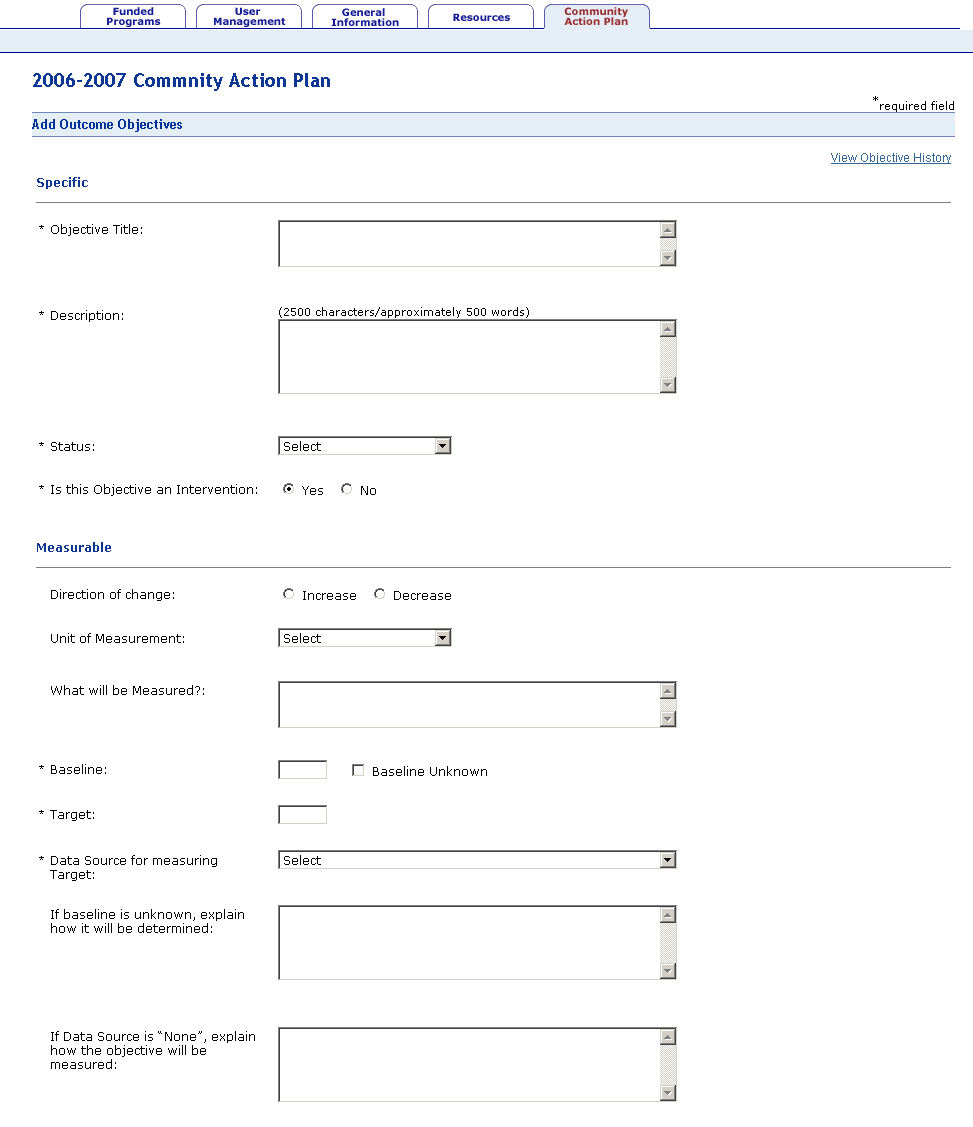
Community Action Plan: Outcome Objectives (Continued)
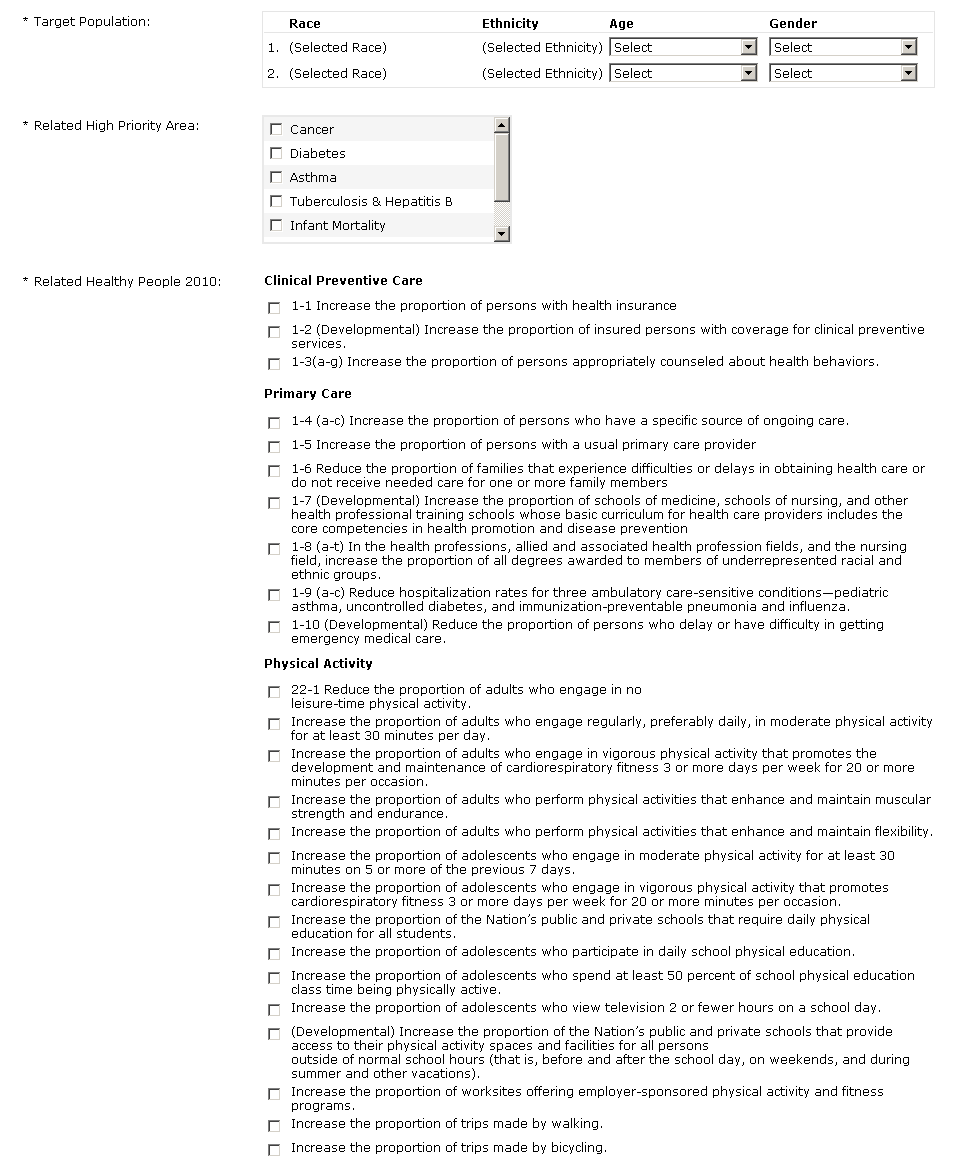
Community Action Plan: Outcome Objectives (Continued)
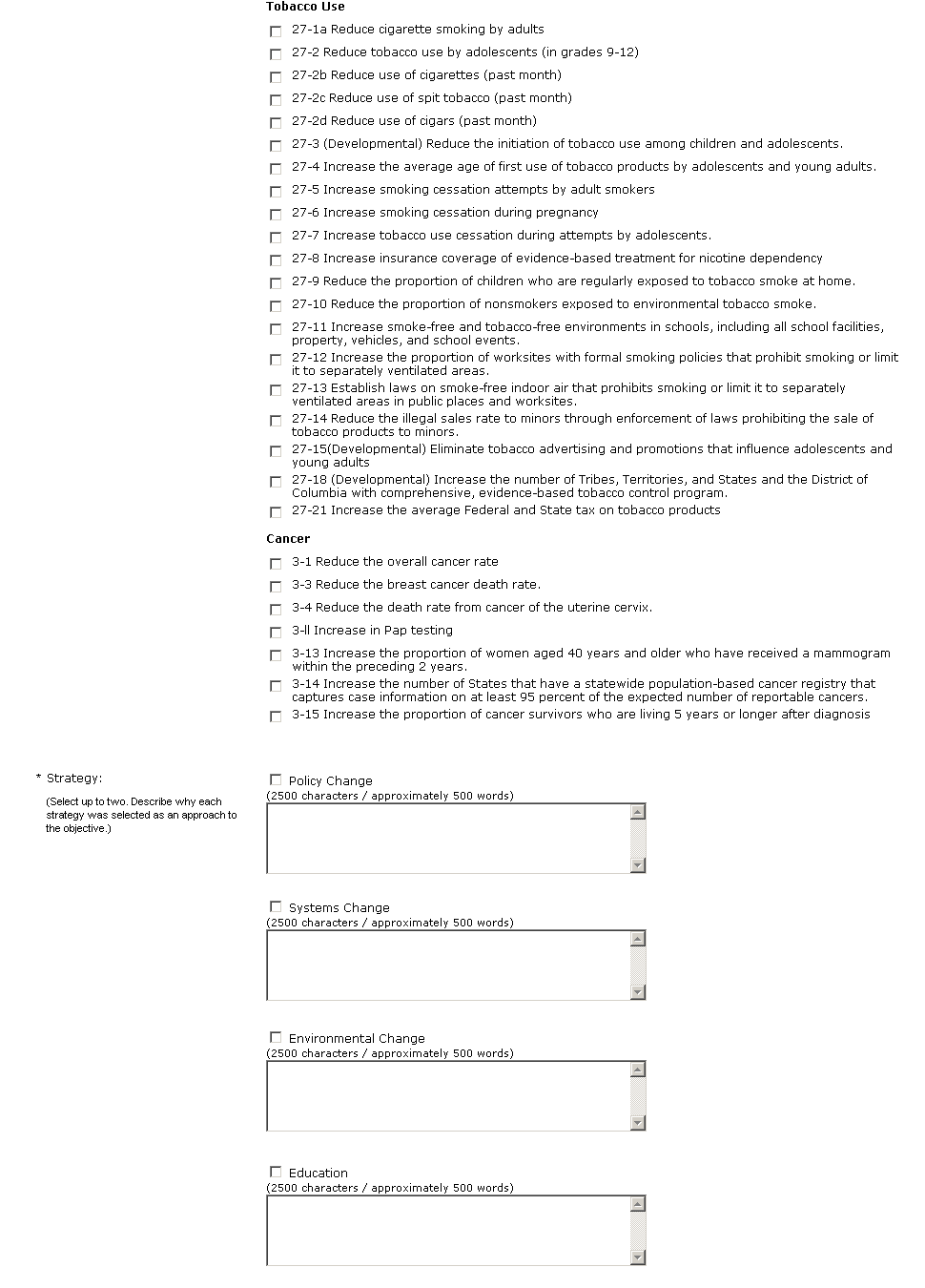
Community Action Plan: Outcome Objectives (Continued)
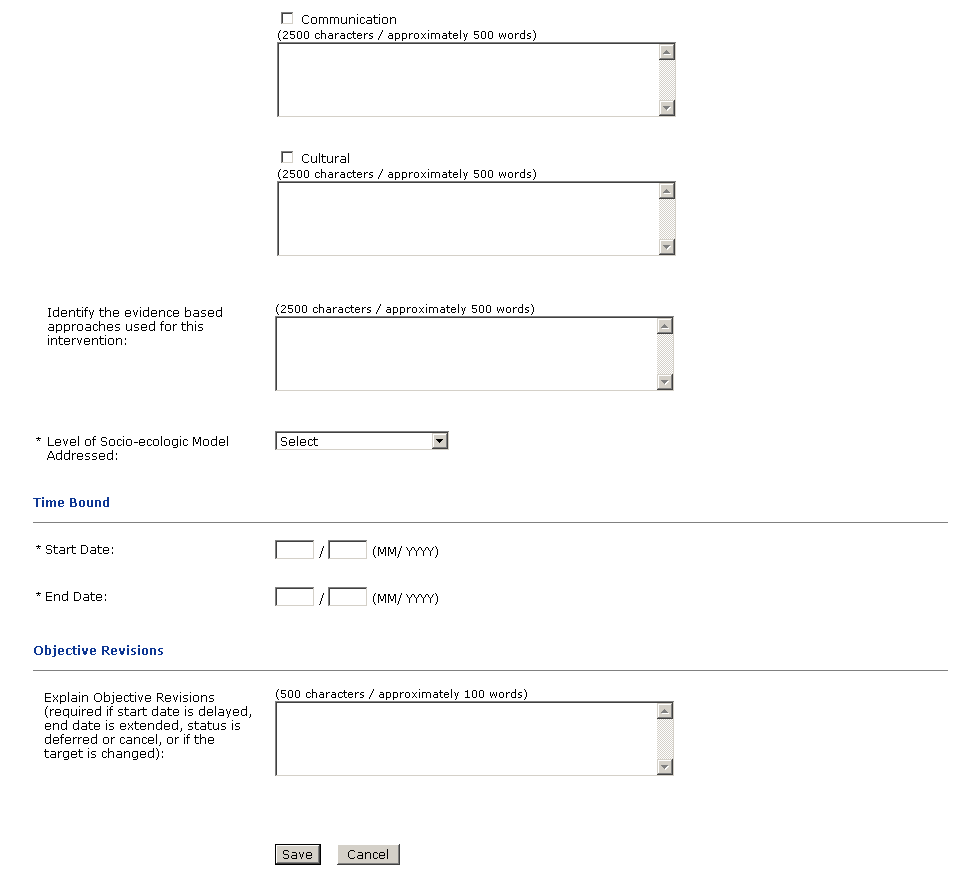
3.17 Community Action Plan: Annual Objectives
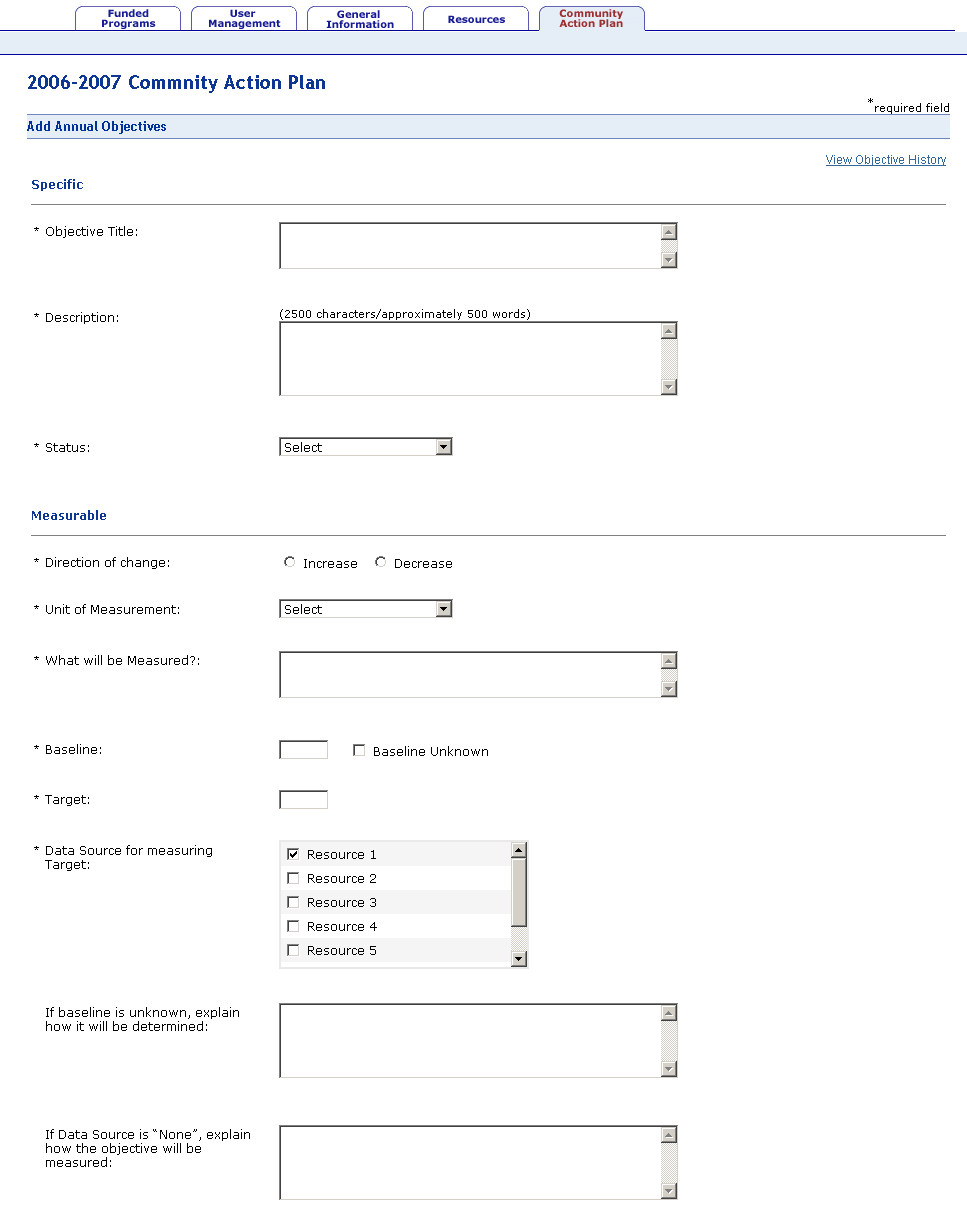
Community Action Plan: Annual Objectives (Continued)
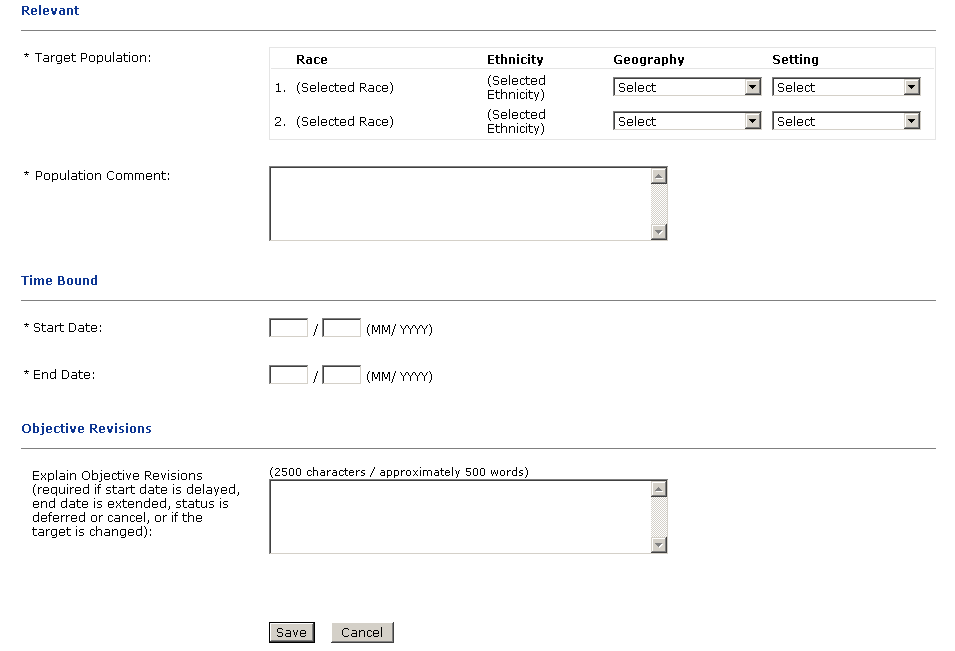
3.18 Community Action Plan: Major Activities

3.19 Community Action Plan: Objective Progress and Results (Objective Met = Yes)

Community Action Plan: Objective Progress and Results (Objective Met = No or Currently Ongoing)
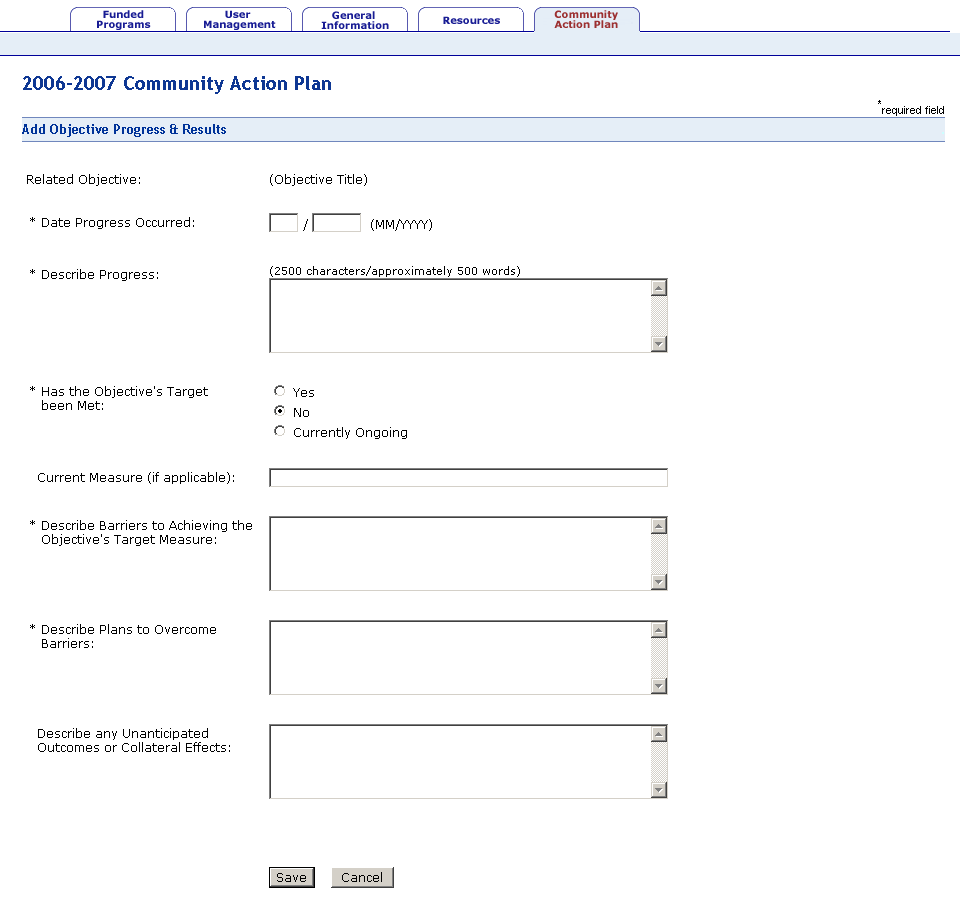
3.20 Community Action Plan: Activity Progress
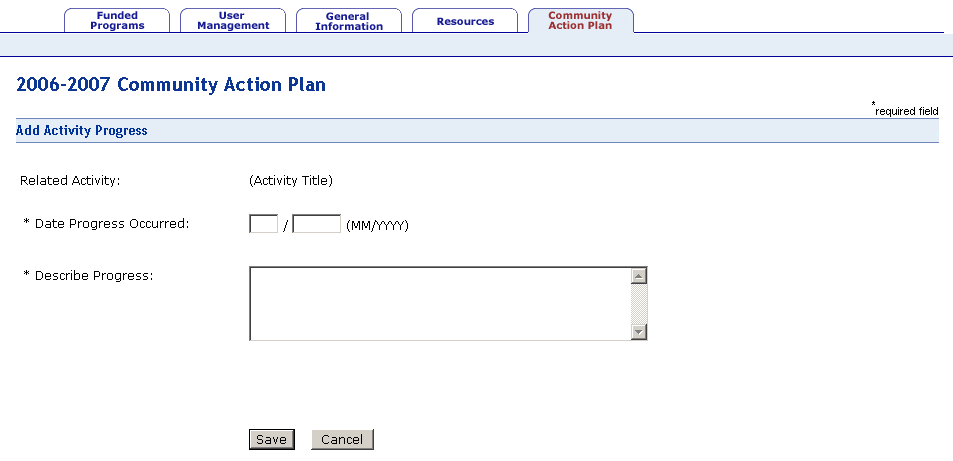
3.21 Community Action Plan: Products
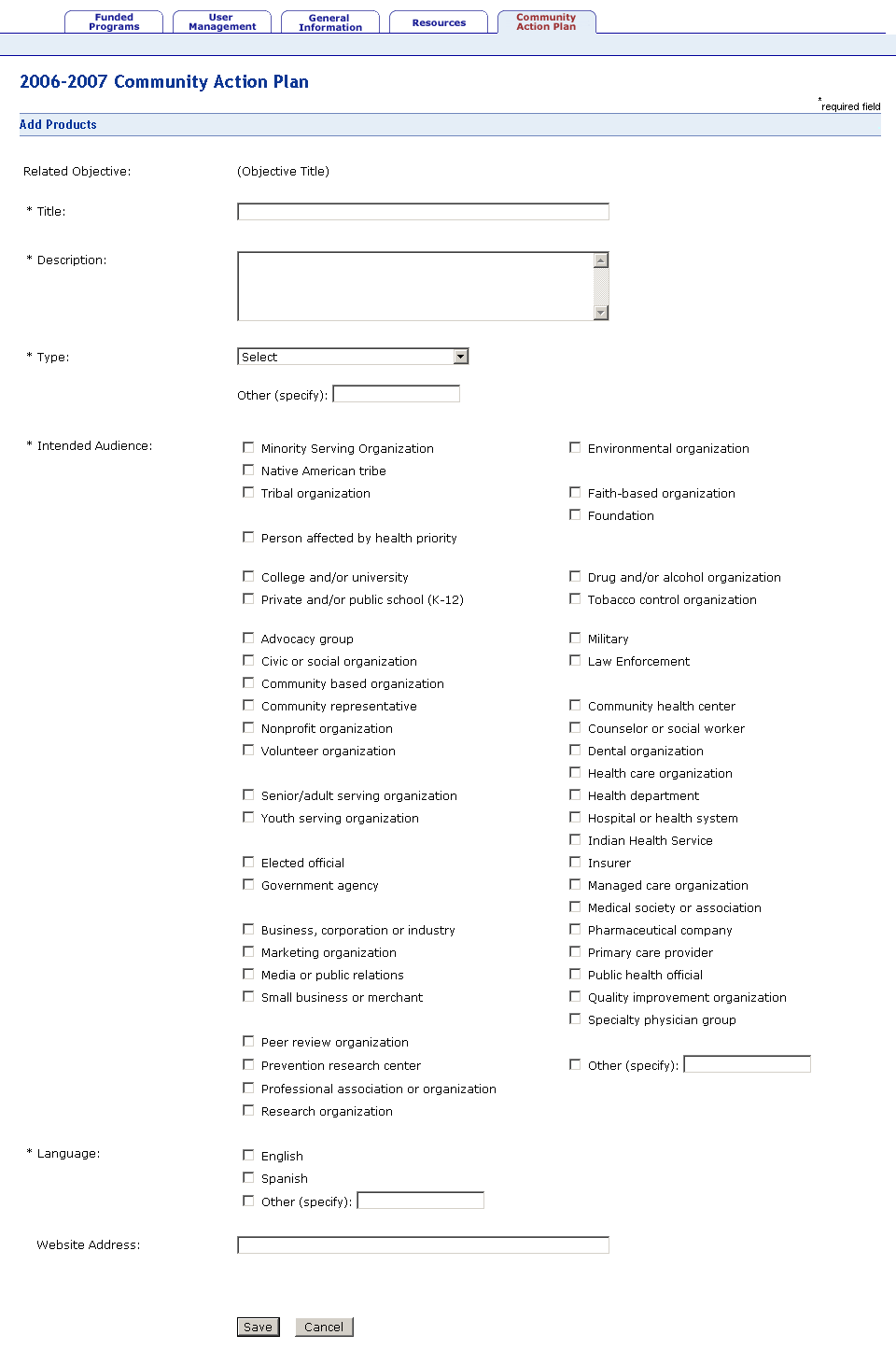
3.22 Community Action Plan: Product Attachments
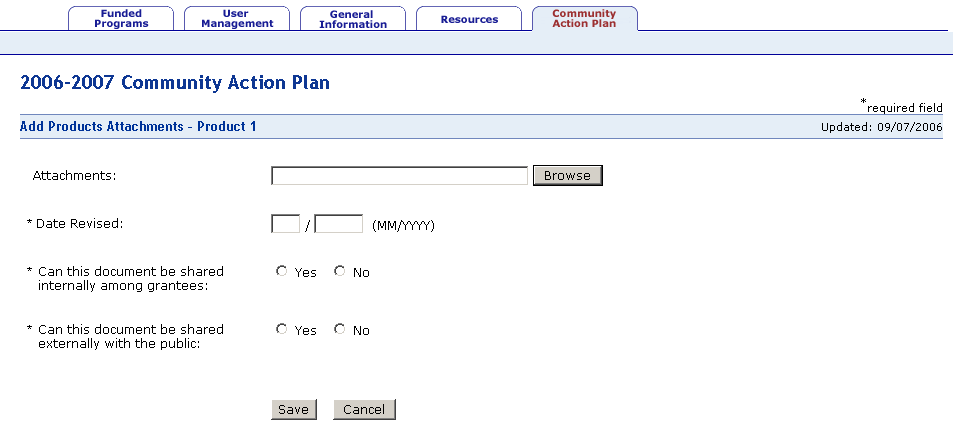
3.23 Community Action Plan: Evaluation Plan
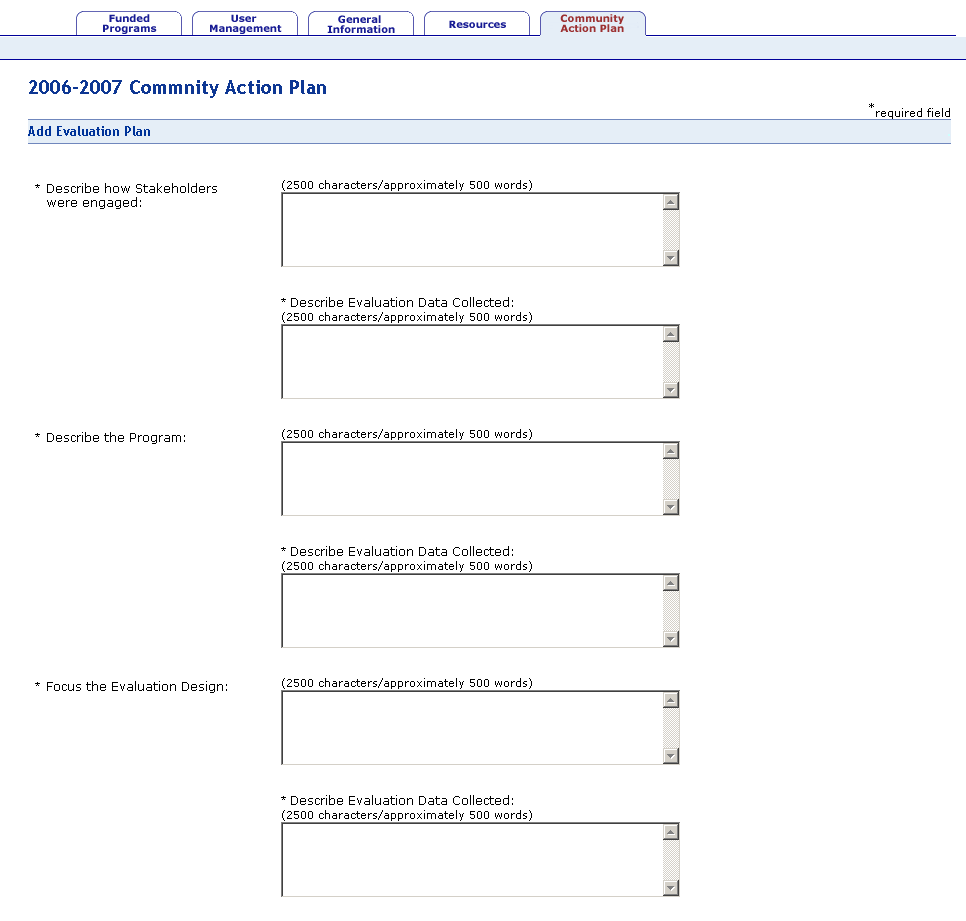
Community Action Plan: Evaluation Plan (Continued)
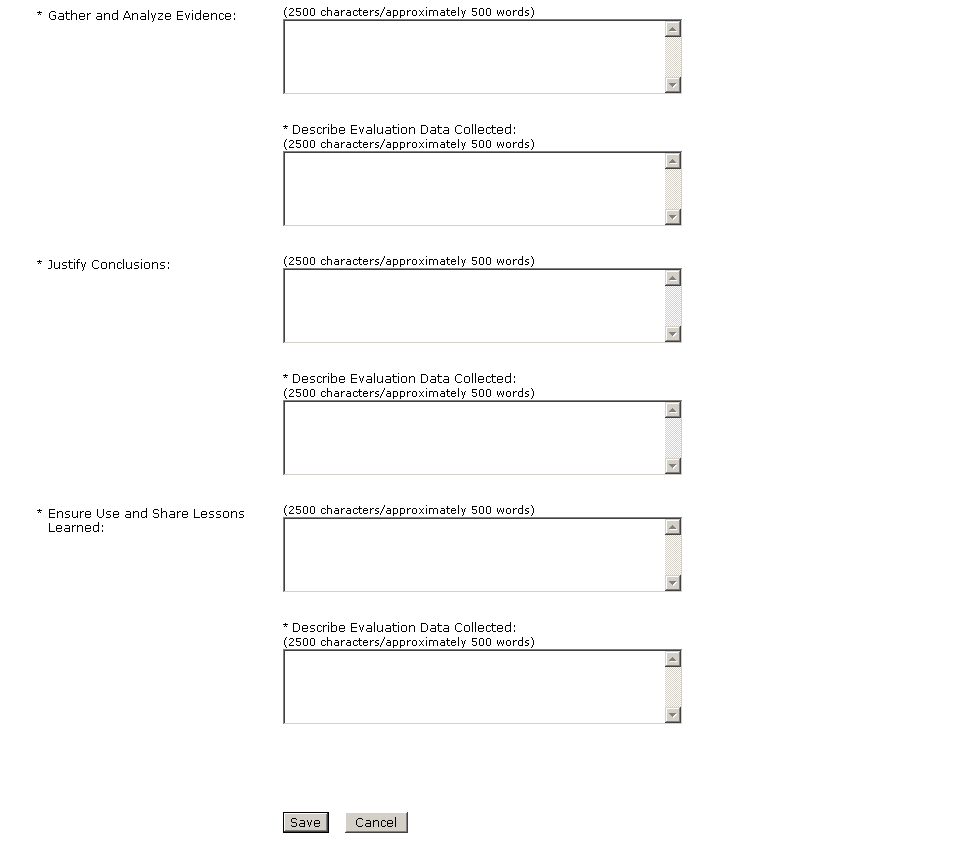
| File Type | application/msword |
| Author | tfl0 |
| Last Modified By | arp5 |
| File Modified | 2007-10-26 |
| File Created | 2007-04-26 |
© 2026 OMB.report | Privacy Policy